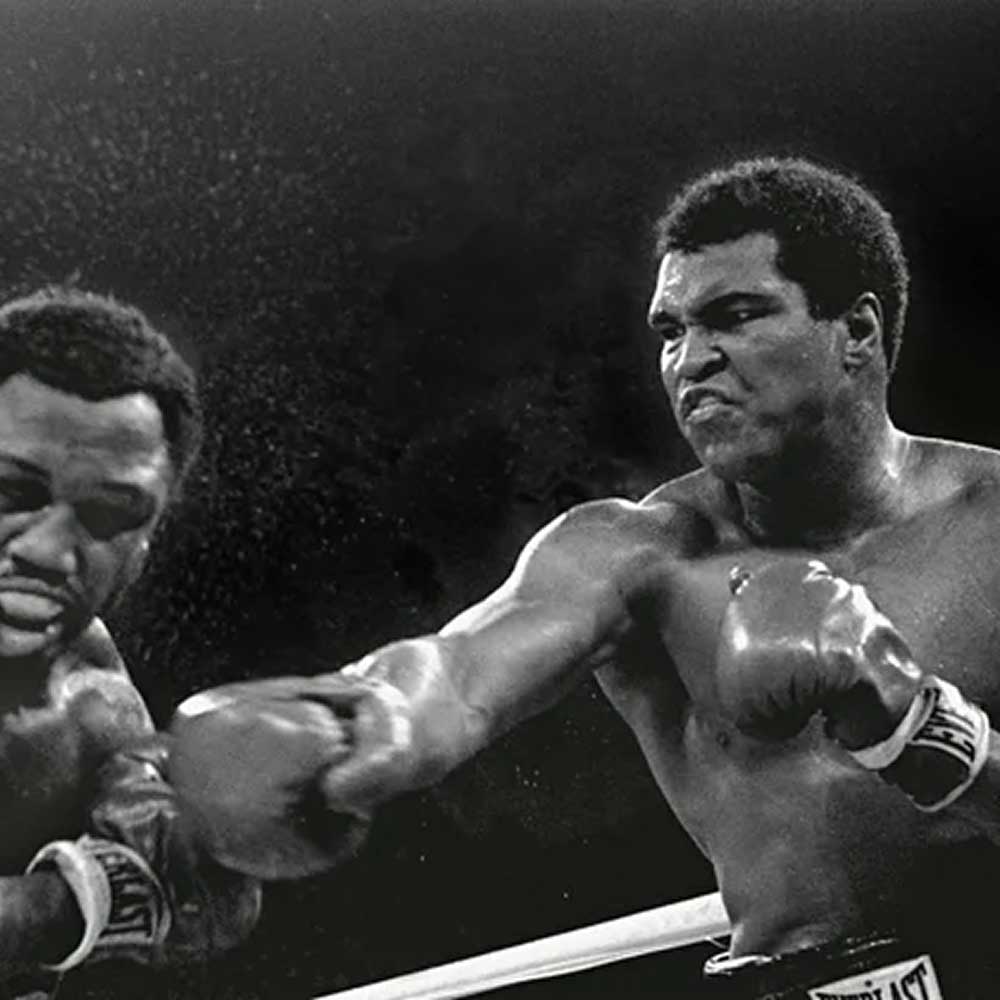
Boxing:The Thriller in Manila (Ali vs. Frazier, 1975)
The Thriller in Manila (Ali vs. Frazier, 1975): A Legendary Battle for the Ages
On October 1, 1975, the boxing world witnessed an unforgettable spectacle as Muhammad Ali and Joe Frazier stepped into the ring for their third and final clash, famously known as “The Thriller in Manila.” This bout was more than a heavyweight title fight; it was an epic saga of endurance, willpower, and raw human spirit, pushing two of the greatest fighters in history to their absolute limits.
The Culmination of an Intense Rivalry
Muhammad Ali and Joe Frazier’s rivalry is one of boxing’s most celebrated and emotionally charged. Their first encounter, the 1971 “Fight of the Century,” saw Frazier deliver Ali his first professional loss in a grueling 15-round decision. Ali came back strong in 1974, claiming victory by decision in their second fight.
By the time the third fight took place, tensions were at an all-time high. The stage was set at the Araneta Coliseum in Quezon City, Philippines, with the heavyweight titles of the WBA and WBC on the line. For the host nation, the event was a chance to shine on the global stage, while for the fighters, it was a final chapter to their legendary feud.
Brutal Conditions and Relentless Combat
The fight was scheduled early in the morning, at 10 a.m. local time, to align with U.S. TV audiences but also subjected both fighters to punishing heat exceeding 100°F (38°C) with no air conditioning in the arena. Such extreme conditions tested not just skill but mental and physical endurance.
Ali opened with his trademark footwork and jab, aiming to control distance and pace. Frazier, ever relentless, pressed forward, launching powerful left hooks to Ali’s body and head, forcing continuous exchanges. Both fighters showed remarkable toughness and resilience as the bout evolved into a grueling war of attrition.
The Decisive Moment and Aftermath
By the 14th round, Ali’s superior stamina and tactical precision began to tell. His aggressive flurry had swollen Frazier’s eyes shut, severely impairing his vision. Seeing his fighter in danger, Frazier’s trainer Eddie Futch made the difficult decision to stop the fight, awarding Ali a technical knockout victory.
Ali later described this bout as “the closest thing to dying that I know,” highlighting the brutal nature of the contest. For Frazier, the fight left lasting physical and emotional scars. The bitterness and animosity between the two men endured for years, underscoring the fight’s personal and historic significance.
The Legacy of “The Thriller in Manila”
This fight stands as one of the most savage, unforgettable battles in boxing history. It symbolizes not only the physical demands of the sport but also the mental toughness and unyielding pride of two of boxing’s greatest icons. Beyond the ring, the fight highlighted themes of resilience, redemption, and the complex human emotions intertwined with competitive sport.
Frequently Asked Questions (FAQs)
Q1: Why was the fight called “The Thriller in Manila”?
A: The fight earned its name due to the incredible intensity, drama, and back-and-forth action in the high-stakes, humid environment of Manila’s Araneta Coliseum. It was a thrilling, grueling contest that pushed both fighters to their limits.
Q2: What made this fight so physically demanding?
A: The fight took place in extreme heat with no air conditioning, pushing Ali and Frazier to battle in temperatures above 100°F (38°C). The intensity of their exchanges, combined with the oppressive climate, made it one of the toughest fights ever.
Q3: How did this fight impact the careers of Ali and Frazier?
A: Ali’s victory cemented his legacy as one of the greatest heavyweights of all time, while Frazier, despite the loss, gained respect for his grit and toughness. Their rivalry remained a defining chapter in boxing history.
Q4: Did Ali and Frazier reconcile after the fight?
A: While their relationship was strained for many years, Ali and Frazier eventually reconciled later in life, showing mutual respect for each other’s contributions to the sport.
Q5: How does “The Thriller in Manila” compare to their other fights?
A: While all three fights were epic, the third was the most physically punishing and emotionally charged, marked by extreme conditions and relentless action.
Insights and Analysis
Strategic Brilliance: Ali’s ability to combine speed, technical skill, and tactical adaptability against Frazier’s relentless pressure showcased two contrasting but equally effective boxing philosophies.
Mental and Physical Endurance: The fight is a masterclass in stamina, with both fighters pushing through exhaustion and injury—a testament to their warrior spirit.
Cultural Significance: Beyond boxing, this fight reflected broader narratives of pride, resilience, and personal redemption, resonating worldwide.
About the Authoring Team – Paragon Elite Fight Group
The Paragon Elite Fight Group Research and Development Team is a dedicated collective of fighters, historians, sports scientists, and strategists committed to preserving the legacy and advancing the future of martial arts and combat sports. Drawing inspiration from ancient traditions such as Hellas’s Pankration, our mission is to combine historical authenticity with modern innovation to empower fighters globally.
Founded in Greece, our team offers expert analysis, comprehensive research, and cutting-edge insights designed for serious athletes and enthusiasts who demand excellence in every aspect of their training and performance.
Discover More
Explore more legendary fight breakdowns, training techniques, and exclusive gear at **www.paragonelitefight.com**—where tradition meets innovation in combat sports.
Stay connected with our latest insights, gear launches, and expert interviews by subscribing to our newsletter or contacting us at [email protected].
